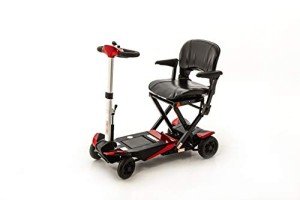20 Mobility Aids Websites Taking The Internet By Storm
Understanding Mobility Aids: Enhancing Independence and Quality of Life
As society continues to age and people significantly seek ways to preserve self-reliance, the demand for mobility aids has never been more essential. Mobility aids, which encompass a range of devices designed to help individuals with walking or walking around, play an essential role in promoting mobility, improving security, and enhancing general lifestyle. Isaiah Hamilton will check out the different kinds of mobility aids, their benefits, considerations for choice, and answer some frequently asked questions.
Kinds Of Mobility Aids
Various mobility aids are offered, each designed to resolve specific needs. The following table summarizes some of the most typical types of mobility aids and their features.
Type of Mobility Aid
Description
Best Suited For
Key Features
Walking canes
A portable stick offering assistance and balance.
People who require very little support.
Light-weight, portable, adjustable height.
Walkers
Four-legged frames supplying stability.
Those needing significant support while strolling.
Foldable, some with wheels, included safety features.
Rollators
Wheeled walkers with a seat for resting.
People requiring mobility with the alternative to rest.
Brakes, baskets for personal items, adjustable height.
Wheelchairs
Chairs with wheels for individuals with restricted mobility.
Those unable to stroll or needing extensive support.
Handbook or powered choices, personalized seating.
Scooters
Motorized devices for larger ranges.
Individuals with limited endurance but requiring independence.
Various sizes and designs, often portable.
Crutches
Support devices placed under the arms or forearms.
Individuals recuperating from lower limb injuries.
Adjustable, lightweight, requires upper body strength.
Stairlifts
Mechanical devices for moving in between floors.
Users dealing with challenges in multi-level homes.
Adjustable for various staircases, automated.
Advantages of Mobility Aids
Mobility aids provide a range of advantages that can significantly boost the lives of people dealing with mobility difficulties. Some noteworthy advantages consist of:
Increased Independence: Mobility aids empower individuals to move freely without counting on others for support, consequently improving their self-confidence and self-esteem.
Enhanced Safety: Using mobility aids can lower the danger of falls and injuries, especially for older adults or those with balance issues.
Enhanced Quality of Life: By helping with mobility, individuals can participate in social activities, attend events, and take pleasure in life more completely, adding to much better psychological and mental health.
Rehab Support: After surgery or injury, mobility aids provide essential support and stability, assisting in recovery and rehabilitation procedures.
Accessibility: Many mobility aids are developed to be utilized both indoors and outdoors, guaranteeing that individuals can browse different environments with ease.
Elements to Consider When Choosing Mobility Aids
Selecting the suitable mobility aid needs careful factor to consider of several elements, consisting of:
Factor
Factors to consider
User's Needs
Examine the level of mobility needed; think about whether the user requires momentary or long-lasting help.
Physical Limitations
Evaluate the user's strength, balance, and coordination to identify the best type of aid.
Setting
Consider the primary environments where the help will be used, such as home, outdoors, or specific terrains.
Weight and Portability
Make sure that the chosen gadget is manageable regarding mobility and storage, particularly for outside usage.
Budget plan
Mobility aids come in a range of prices; consider insurance protection and readily available funding alternatives.
Adjustability
Select aids that can be adjusted for height and comfort to accommodate development or altering needs.
Frequently Asked Questions About Mobility Aids
1. How do I know if I need a mobility help?
Lots of elements can signal the need for a mobility help, such as difficulty walking or balancing, tiredness while standing, or a recent surgery impacting mobility. Consulting with a healthcare specialist can offer guidance customized to specific requirements.
2. What types of mobility aids are covered by insurance?
Coverage differs between insurance companies, but the majority of offer options for resilient medical equipment, which generally includes wheelchairs, walkers, and some kinds of walking canes. Inspect with your insurance supplier for particular coverage information.
3. Can mobility aids be utilized outdoors?
Yes, numerous modern mobility aids are developed for outdoor usage. Rollators, scooters, and some walkers are equipped with features for stability and ease of usage on different terrain.
4. How do I preserve my mobility help?
Routine upkeep includes inspecting for any wear and tear, ensuring that parts such as wheels, brakes, and frames are working correctly, and cleaning up the equipment as required. Following the maker's standards is essential for safety.
5. Exists a threat of ending up being based on mobility aids?
While some users might end up being reliant on mobility aids, they are developed to promote self-reliance and mobility. Gradually utilizing a mobility aid can improve confidence and assistance maintain physical strength and coordination.
Mobility aids are invaluable tools that empower people to overcome physical challenges, promoting independence and enhancing quality of life. By comprehending the various kinds of mobility aids readily available, their benefits, and important elements for consideration, families and caretakers can make educated choices that best meet the requirements of their loved ones. With the ideal assistance, those with mobility challenges can lead fulfilling and active lives, complimentary to explore the world around them.
